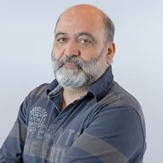New Approaches in Invasive and Non-invasive Rehabilitation: From Basic Science to Clinical Intervention
A special issue of Healthcare (ISSN 2227-9032).
Deadline for manuscript submissions: 31 August 2024 | Viewed by 11175
Special Issue Editors
Interests: physiotherapy; dry needling; ultrasound; anatomy electromyography; manual therapy
Special Issues, Collections and Topics in MDPI journals
Interests: ultrasonography; physiotherapy; rehabilitation; physical therapy
Special Issues, Collections and Topics in MDPI journals
Interests: anatomy; rehabilitation; sport; older people
Special Issues, Collections and Topics in MDPI journals
Special Issue Information
Dear Colleagues,
Rehabilitation is a multidisciplinary concept that is constantly advancing and, in recent years, a multitude of new techniques, treatments and evaluations have been implemented. This Special Issue aims to bring together high-quality articles focused on the subject of rehabilitation.
Both evaluation and treatment technique articles conducted in a clinical or laboratory setting will be evaluated.
- Ultrasound
- Invasive techniques
- Manual Therapy
- Exercise
- Minimally invasive surgery
Dr. Jacobo Rodríguez-Sanz
Dr. Carlos López-de-Celis
Dr. Albert Pérez-Bellmunt
Guest Editors
Manuscript Submission Information
Manuscripts should be submitted online at www.mdpi.com by registering and logging in to this website. Once you are registered, click here to go to the submission form. Manuscripts can be submitted until the deadline. All submissions that pass pre-check are peer-reviewed. Accepted papers will be published continuously in the journal (as soon as accepted) and will be listed together on the special issue website. Research articles, review articles as well as short communications are invited. For planned papers, a title and short abstract (about 100 words) can be sent to the Editorial Office for announcement on this website.
Submitted manuscripts should not have been published previously, nor be under consideration for publication elsewhere (except conference proceedings papers). All manuscripts are thoroughly refereed through a single-blind peer-review process. A guide for authors and other relevant information for submission of manuscripts is available on the Instructions for Authors page. Healthcare is an international peer-reviewed open access semimonthly journal published by MDPI.
Please visit the Instructions for Authors page before submitting a manuscript. The Article Processing Charge (APC) for publication in this open access journal is 2700 CHF (Swiss Francs). Submitted papers should be well formatted and use good English. Authors may use MDPI's English editing service prior to publication or during author revisions.
Keywords
- dry needling
- ultrasound
- manual therapy
- anatomy
- percutaneous electrolysis
- exercise
- minimally invasive surgery








